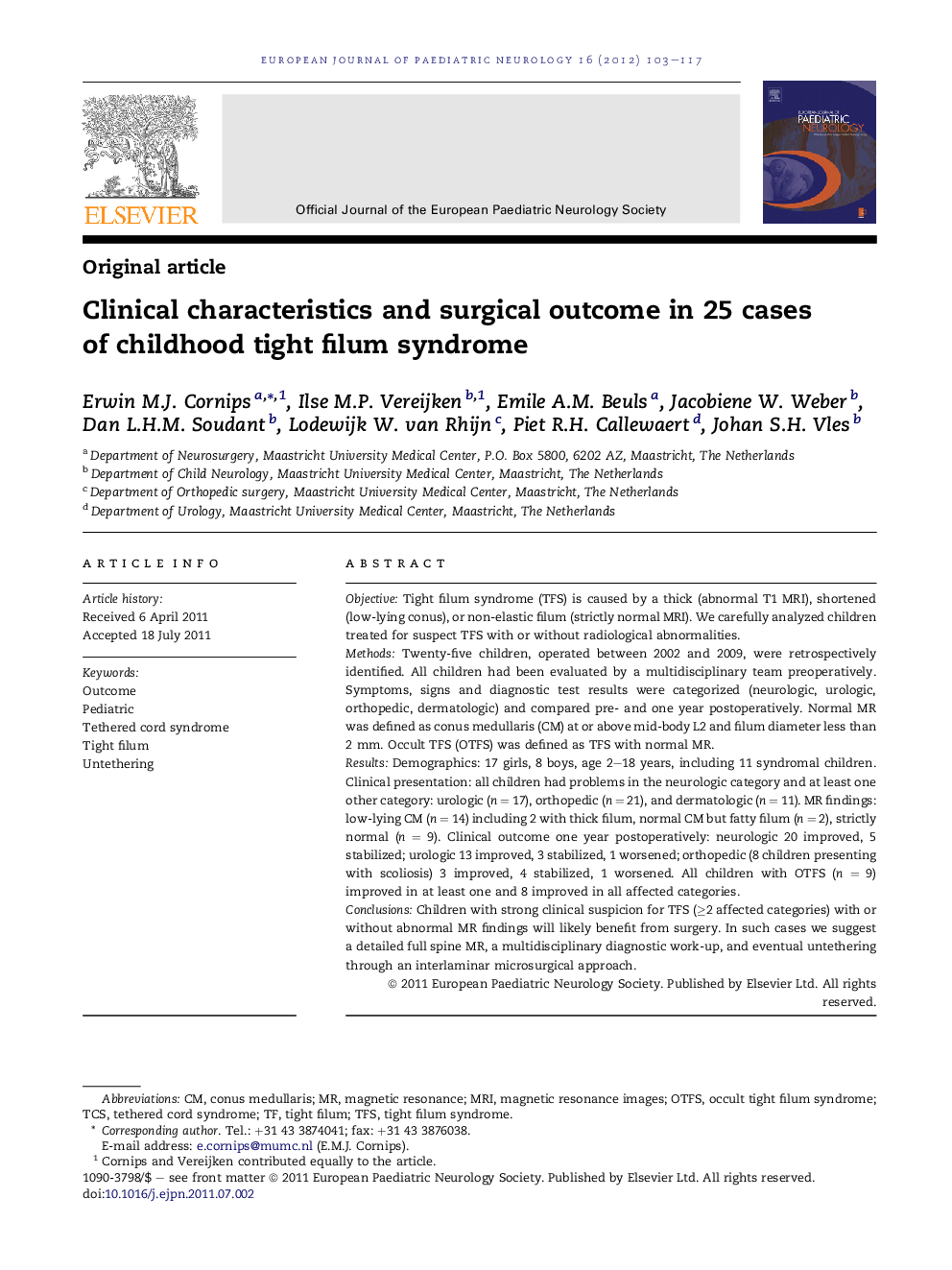| کد مقاله | کد نشریه | سال انتشار | مقاله انگلیسی | نسخه تمام متن |
|---|---|---|---|---|
| 3053989 | 1580034 | 2012 | 15 صفحه PDF | دانلود رایگان |

ObjectiveTight filum syndrome (TFS) is caused by a thick (abnormal T1 MRI), shortened (low-lying conus), or non-elastic filum (strictly normal MRI). We carefully analyzed children treated for suspect TFS with or without radiological abnormalities.MethodsTwenty-five children, operated between 2002 and 2009, were retrospectively identified. All children had been evaluated by a multidisciplinary team preoperatively. Symptoms, signs and diagnostic test results were categorized (neurologic, urologic, orthopedic, dermatologic) and compared pre- and one year postoperatively. Normal MR was defined as conus medullaris (CM) at or above mid-body L2 and filum diameter less than 2 mm. Occult TFS (OTFS) was defined as TFS with normal MR.ResultsDemographics: 17 girls, 8 boys, age 2–18 years, including 11 syndromal children. Clinical presentation: all children had problems in the neurologic category and at least one other category: urologic (n = 17), orthopedic (n = 21), and dermatologic (n = 11). MR findings: low-lying CM (n = 14) including 2 with thick filum, normal CM but fatty filum (n = 2), strictly normal (n = 9). Clinical outcome one year postoperatively: neurologic 20 improved, 5 stabilized; urologic 13 improved, 3 stabilized, 1 worsened; orthopedic (8 children presenting with scoliosis) 3 improved, 4 stabilized, 1 worsened. All children with OTFS (n = 9) improved in at least one and 8 improved in all affected categories.ConclusionsChildren with strong clinical suspicion for TFS (≥2 affected categories) with or without abnormal MR findings will likely benefit from surgery. In such cases we suggest a detailed full spine MR, a multidisciplinary diagnostic work-up, and eventual untethering through an interlaminar microsurgical approach.
► We analyze 25 children operated for suspect tight filum syndrome.
► Children with strong clinical suspicion will likely benefit from surgery.
► There may be a simple, complex, or even syndromal clinical presentation.
► There may be a fatty filum, low-lying conus, and/or other neuraxis imaging anomalies.
► Full spine MR, multidisciplinary work-up, and careful technique are key to success.
Journal: European Journal of Paediatric Neurology - Volume 16, Issue 2, March 2012, Pages 103–117